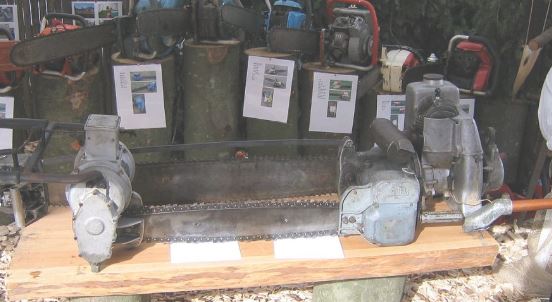Since ancient times, people have used ships for transportation, exploration, and war. European seafarers like the famous Juan Sebastian Elcano, the first sailor to sail around the world, pioneered the use of this revolutionary watercraft. The parts of a ship were very different at that time, but they were still able to serve their purpose. Centuries after, ships of various shapes and sizes still play an important role in our society.
So much so, do you know that almost 90 percent of everything we buy arrives by ship? As we speak, at least 20 million containers are currently traveling across the oceans and over 1.5 million sailors are taking care of those containers.
Do you know that shipping is a huge source of revenue in many countries? And if you are an environmentally conscious individual, you’re probably aware that shipping emits far fewer greenhouse gases than planes or trucks. This mode of transportation is safe, efficient, and great for the environment!
That said, have you ever thought about how ships work? How does a ship move on its own, and how does everything inside of it work together to bring items or people to their destination? To make things easier to understand, think of it this way – a ship is like a floating city with several different parts.
A ship won’t be a ship without its three main components: the hull, the engine room, and the navigation bridge. Inside those components are more visible pieces and invisible parts. They all work hand in hand.
Rudders, anchors, bows, keels, propellers, masts, bridges, hatch covers, and bow thrusters are some of the more prominent components, while bulkheads and keels are some of the less visible parts.
Let’s get to know some of them below.
Parts Of A Ship
1. Bow
The bow is the front of a ship. It is the first part of the ship to make contact with the sea, and it controls how waves interact with the ship. A bow help reduces the resistance of the hull as it cuts through the water.
The shape of the ship’s bow varies depending on the ship’s type, the speed of the ship, etc. There are several types of bow designs. The Raked bow design is one of the most common. Here, the line of the bow is flat. It does not have any curves. Traditional raked bows help direct spray outwards and away from the ship, helping to keep the ship drier.
2. Aft
Aft, in naval terminology, means, “towards the rear or stern of the ship.” In other words, the back of the ship. If you are on a ship, and you often get motion sickness, you should stay at the aft. It gets some movement but substantially less than the front of a ship. You won’t be dizzy as much.
Here is a better way to illustrate it – if you are inside a ship and you want to point towards the direction of the stern, you say, ” I see you moving towards the aft.” Still confused? Here’s a trick that sailors use to remember the bow and the aft. When you think of the bow, the front of a ship, connect it to the word “before,” and when you think of the Aft, the back of the ship, connect it with the word, “after.”
3. Stern
The stern is the backside of a ship. It is the exact opposite end of the boat from the bow or front. The stern is constructed over a sternpost, a structural beam over which the ship’s transom, or back end. A stern makes sure there is a uniform flow of water entering the ship’s propellers.
The stern of many ships is the engine room. Smaller vessels may have propulsion systems in the stern; motorboats, for example, frequently have outboard motors that extend into the water from this area. Some boats also have a rudder that extends into the water at the aft end of the boat to assist in steering.
The stern of a ship can have different functions depending on the type of vessel. For example, a cruise ship may have a dining space near the stern to provide a clear view of the sea.
On older sailing vessels, the captain’s quarters were placed at the stern of the ship. On yachts and other modern-day vessels, the name of the vessel is painted on the stern.
4. Bridge
If an airplane has a cockpit, and the car has a driver seat, the counterpart of a ship is its bridge. The bridge is the ship’s “brain.” The bridge of a ship is a room or platform from which the ship can be controlled. When a ship is at sea, an officer of the watch is stationed at the bridge. A seaman, who serves as a lookout, assists him.
During important maneuvers, the captain of the ship will be on the bridge, aided by an officer of the watch, an experienced seaman at the wheel, and sometimes a pilot, if the situation calls for it.
The ship’s bridge is usually located near the bow. This is where the captain and the officers navigate and manage the vessel. However, some cargo ships put the bridge near the aft.
5. Hull
A ship’s hull is the most crucial as well as the most visible section of the vessel. It is the main body of the ship and helps keep water out of the vessel. The hull makes sure the ship’s cargo and machinery are well protected and free from any form of damage.
Ships are designed to do many things, and the shape of their hull plays a big role in that. Planing hulls ride on top of the water, while displacement hulls travel through it. Large ships and recreational sailboats have displacement hulls.
Displacement hulls move more slowly but are more stable in motion, and they can carry big loads even if they have relatively small propulsion units. Displacement hulls have round bottoms with a ballast placed low and at the center. At rest, round hulls tend to roll with the waves and swells.
On the other hand, most powerboats and personal watercraft have planing hulls that ride on the water and move at a higher speed. They move at around 15 to 16 meters per hour depending on the ship’s design and load.
There are many other types of hulls. How they are designed depends largely on the shape of the ship, speed of the ship, load-carrying capacity, stability, etc. The hull is the most notable structural entity of a ship.
6. Deck
In simple terms, decks are the ship’s floors. A ship has several floors or several decks, and the main deck is the one that passengers and crew commonly use. Depending on the type of ship, the main deck may be separated into several locations. It isn’t always the highest deck.
The upper deck, lower deck, promenade deck, flush deck, weather deck, bridge deck, quarter-deck, and poop deck are some of the other decks found on a ship. Depending on the style of the ship, the upper deck is usually on top of the hull, while the lower deck is either the same as the main deck, or slightly underneath it. The promenade deck is the section of the ship where passengers can relax.
In addition, the flush deck is located towards the ship’s front, the bridge deck houses the ship’s navigational equipment, and the weather deck is a deck without a roof. The poop deck is on the ship’s tail, and the quarter deck is a raised deck behind the main mast of a ship.
7. Lido Deck
If you’re on a cruise ship, the lido deck is the area where you can find and enjoy outdoor activities. Most lido decks have a water slide or mini water park, hot tubs, a sports hub, bandstand, buffet area, jumbo-sized movie screen for entertainment, spa, and fitness center.
Where did the name “Lido” come from? Lido is the Italian word for “beach.” Italian seaside towns famous for their beaches have “Lido,” in their name, like Lido di Venezia, for instance.
Some historians say the term may have first found its way into the English language in the late 19th century. English visitors returning from the Lido di Venezia reportedly began using the term during that time, and it was passed on from generation to generation.
8. Promenade Deck
Another common type of deck on a passenger ship is the promenade deck. This deck usually stretches from bow to aft (end to end), giving you a continuous walkway suitable for promenading as its name suggests ― to walk, stroll or wander. If you’re on a ship and you want to go for a long walk, this would be the best place to do so.
9. Flight Deck
Since the 1900s, flight decks from warships have been in service. Eugene Ely, an American pilot, was the first man to take off from a warship on November 14, 1910. Today, modern warships have become way more advanced, but their principles stay the same. The warship’s flight decks continue to act as its warplane’s runway. On smaller naval ships, the landing area for helicopters and other aircraft is referred to as the flight deck.
10. Sundeck and other decks
The sundeck is one of the most popular decks on a cruise ship. Here, passengers try to soak up some sun. They get a chair, read a book, or take a nap while sunbathing.
Overall, there are so many varieties of decks in each type of ship. To get familiar to some, here is a list of other, more common decks: berth deck (naval), boat deck (where the ship’s lifeboats are launched), flush deck (naval), gun deck (naval), hangar deck (naval), poop deck (stern deck), and weather deck (any deck exposed to the outside).
11. Cabin
In sailing ships, a cabin is either for a single person or sharing. Normally, the commanding officer or the captain has a cozy private cabin with panoramic windows.
For the warships, a cabin is a privileged place exclusively for the captain. In bigger warships, cabins can be divided by movable boards (for day and night use). These boards are called “bulk-heads.” These removable boards were used in times of battle to easily clear the cabin for the gunners.
Ships carrying passengers stay in rooms called cabins. First-class cabins used to be called staterooms. Today, many cruise lines now prefer to refer to passenger cabins as suites. A cabin crawl is a cruise ship event in which passengers tour the suites of other passengers. This gives passengers a sense of the space and layout of various cabin options in case they want to go on their next cruise. Cabin crawls usually happen before a trip.
12. Anchor
An anchor is a device, usually made of metal, used to secure a vessel to prevent it from drifting away. Depending on the ship, anchors can weigh up to 7 tons and has around 600 meters of length from their chain.
A ship’s anchor can be either temporary or permanent. Permanent anchors are used to creating moorings. They mostly stay in one place; moving them usually requires the effort of a specialized service. Vessels are equipped with one or more temporary anchors of various designs and weights.
13. Rudder
A car has a steering wheel, a ship has a rudder. The rudder helps the ship turn towards the direction it wishes to go. Rudders are installed at the aft to boost the ship’s hydrodynamic efficiency. Rudders and propellers work hand in hand like Batman and Robin. The propellers create a force that pushes the ship forward while the rudder provides directional stability.


